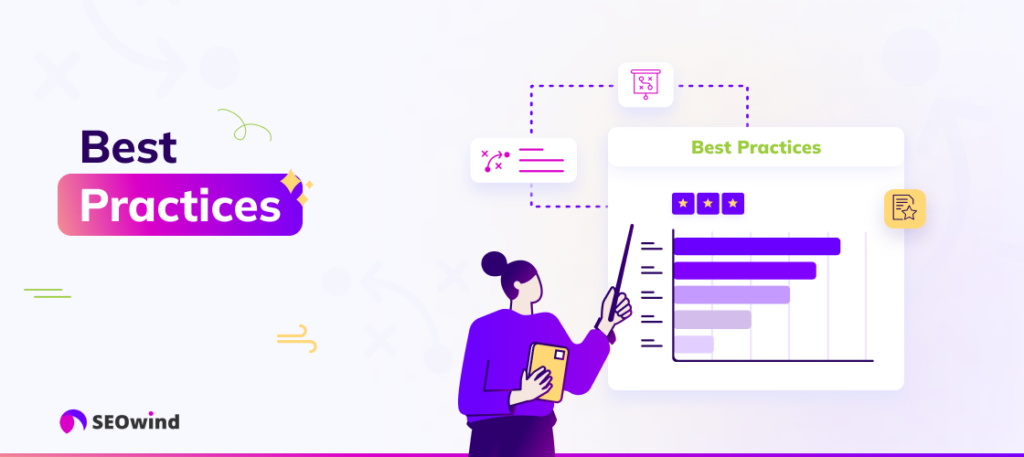Mastering the art of search engine optimization (SEO) is essential for any website looking to rank high on Google and drive organic traffic. At the core of an effective SEO strategy lies keyword analysis, a tried and tested method that ensures your content hits all the right notes with users and search engines. This comprehensive guide will equip you with everything needed to excel at keyword analysis — from understanding its crucial importance in driving traffic growth to learning how to utilize best practices in choosing the best keywords, that yield outstanding results. So buckle up as we unravel the fascinating world of keyword analysis SEO!
What is Keyword Analysis SEO?
Keyword analysis SEO refers to identifying, analyzing, and prioritizing relevant words or phrases people use when searching online. These strategic terms are then integrated into a website’s content, meta tags, URLs, and other elements on each web page, enabling it to rank higher among search engine results for those specific queries.
The objective behind performing keyword analysis is threefold:
- Gaining deeper insights into user behavior: Understanding the terms people use while searching for similar products or services can help tailor content better suited to their needs.
- Optimizing visibility: Strategically targeting high-performing keywords within a particular niche or industry creates more opportunities for your site to be placed prominently in related search results.
- Boosting overall site performance: Ongoing keyword analysis is vital in optimizing a website’s structure, design, and user interface so that existing and prospective customers enjoy engaging experiences.
Adequately conducted keyword analysis is one of the most crucial aspects of SEO. It increases your brand’s online presence while providing valuable information about your target audience’s requirements and preferences.
What’s the difference between Keyword Analysis for SEO and Keyword Research?

To fully understand the process of optimizing your website for search engines, it is vital to grasp the distinction between keyword analysis for SEO and keyword research. While these two concepts are related and intertwined, they serve distinct purposes in an overall SEO strategy.
Keyword Research involves discovering new keywords that potential visitors may use when searching online. It is essential to take this first step to ascertain which words and phrases will attract relevant traffic to your site while also resonating with its content.
- Brainstorming keyword ideas
- Utilizing keyword research tools such as Google Keyword Planner, Ahrefs or SEMrush
- Analyzing competitor keywords
Keyword Analysis for SEO: Building upon the foundation set by keyword research, this process sees a deeper dive into evaluating the feasibility of those identified terms in crafting an effective optimization plan. Critical factors considered here include relevance, authority, search volume, competition level, and the user intent behind each term to map expectations vis-a-vis tangible results achievable within a specific timeline.
- Determining competitiveness of targeted keywords
- Assessing the relevance of keywords to your website’s content
- Identifying high-volume keywords with acceptable difficulty levels
- Recognizing opportunities within long tail keywords
In essence, although both processes share similarities – not least their focus on identifying valuable target words or phrases – key distinctions reside in their objectives. Keyword research kick-starts the endeavor by generating new keyword ideas capable of fostering traffic growth; meanwhile, keyword analysis for SEO mandates further scrutiny of these targets through a more conscientious lens, evaluating their suitability based on data-driven insights.
Importance of Keyword Analysis for Search Engines

Keyword analysis is a crucial aspect of Search Engine Optimization (SEO), laying the foundation for successful website optimization. It involves researching, analyzing, and selecting keywords relevant to your target audience, competitors in the market, and other website metrics. Let’s dive into its importance for specific aspects of SEO.
Marketing Trend Insight
One significant benefit of keyword analysis is that it grants insight into current marketing trends in your industry or niche. By examining popular search terms and SERP keywords related to your field, you can identify emerging patterns and preferences among users. This invaluable knowledge enables you to stay ahead by adjusting your content strategy to address these identified trends. Understanding industry-specific search behavior also helps create targeted marketing campaigns that effectively cater to users’ needs.
Traffic Growth
Keywords are essential drivers of organic traffic growth on your website. Analyzing search query and optimizing for pertinent keywords ensures that search engines recognize the relevance of your content when users perform searches with those terms. As a result, this increases the likelihood that your site will appear higher in SERPs (Search Engine Results Pages), allowing more people to discover your content – eventually boosting overall site visits.
To maximize traffic growth:
- Target high-volume keywords
- Optimize content around user intent
- Monitor keyword rankings regularly
- Focus on long-tail keywords for better conversion rates
Customer Acquisition
A keyword analysis is integral in attracting potential customers since well-optimized websites attract visitors actively searching for products or services similar to what you offer. By targeting specific consumer segments through relevant keyword usage within content creation and site structure, you improve user experience significantly – ensuring their queries align with your business offerings.
Moreover, precise keyword implementation increases the chances of capturing leads at various customer journey stages – from the awareness/education phase to the consideration and decision-making stage. It ultimately leads to higher conversion rates.
Elements of Keyword Analysis for SEO
When executing a successful keyword analysis for SEO, consider three key elements: relevance, authority, and volume. Understanding and evaluating these factors allows you to select the most effective keywords for your website’s search engine optimization strategy.
Relevance
Relevance plays a pivotal role in selecting the right keywords for your website. The chosen keywords should directly relate to your content, products, or services to target users who are genuinely interested in what you have to offer. When performing a keyword analysis, your ultimate goal is to identify terms that align with user intent and your business objectives.
Here are some strategies on how to analyze the relevance of potential keywords:
- Evaluate if the term accurately represents your offerings
- Determine whether it addresses or solves a problem faced by your target audience
- Consider the possible commercial applications or value tied to the keyword
Prioritize keywords to increase the likelihood of driving highly targeted traffic toward your site, which can ultimately improve overall conversions.
Authority
Authority refers to your website’s level of expertise and credibility within its niche. To rank higher on search engine result pages (SERPs), you must establish yourself as an authoritative source by creating high-quality content around targeted keywords.
Consider these tips when identifying authority-building keywords:
- Look for industry-specific jargon or unique terminologies related to your niche
- Assess competing websites’ rankings for those particular terms
- Aim at targeting less competitive yet valuable phrases through long-tail keywords
By focusing on building authority through well-selected keywords, not only do you stand out from competitors but also foster trust and credibility among users.
Volume
Volume refers to the number of monthly searches users conduct regarding specific keywords. Understanding this element allows you to analyze keywords to gauge user demand concerning keyword popularity.
For a practical analysis of volume-related aspects in keyword analysis, take these steps:
- Verify keyword search volume using reliable SEO tools like Google Keyword Planner or Moz’s Keyword Explorer.
- Be cautious about pursuing keywords with significantly low volumes, as they may not generate sufficient traffic to your website.
- Assess the balance between competition and search volume: Moderate-volume keywords with less competition can be more advantageous than highly-competitive ones.
Selecting high-volume keywords is essential for driving increased organic traffic while ensuring your target audience finds your content quickly amidst a dynamic online landscape.
By incorporating relevance, authority, and search volume, into your keyword analysis process, you optimize your chances of achieving higher SERP rankings and positioning yourself favorably in front of potential customers. Remember that staying connected to industry trends, analyzing user intent, and making data-driven decisions are keys to unlocking the full benefits of an effective SEO strategy.
Steps to Research Keywords for SEO Strategy

Developing a comprehensive and effective SEO strategy for creating content requires thorough keyword research. By understanding the steps in researching keywords, you can create high-ranking content that generates traffic and boosts customer acquisition.
Make a List of Important, Relevant Topics
To begin your own keyword research and analysis journey, brainstorm several broad topics relevant to your business or industry. These general topics will help guide the rest of your keyword research process by providing a solid foundation for uncovering new keywords.
For example, if you operate an online fitness equipment store, potential topics could include:
- Home gym equipment
- Cardio workouts
- Strength training exercises
Ensure these topics are essential to your target audience and business goals.
Identify Seed Keywords
Seed keywords, as the name suggests, serve as the foundation upon which your entire keyword research and optimization efforts will grow and flourish. These are the basic, core terms that succinctly describe your product, service, or niche, and are most likely to be used by your potential customers in their search queries.
Fill in Those Topic Buckets with Keywords
Once you have established your primary topic buckets, dig deeper and fill them with relevant keywords. Use various methods, such as analyzing competitor websites’ keyword lists and considering the phrases customers might use when searching for your products or services. Additionally, using Google’s autocomplete feature can provide valuable insights into popular search queries related to each topic.
Look through Organic Search Traffic Bucket
Focus on the organic search traffic bucket. This bucket consists of users who find your website through search engines like Google or Bing without the assistance of paid advertisements. By analyzing the keywords that drive users to your site organically, you can identify areas of improvement and implement targeted SEO strategies.
Understand How Search Intent Affects Keyword Research
Searcher intent is critical when conducting keyword research for SEO, as it helps unveil why individuals use particular phrases during their online searches. There are four main categories of user intent:
- Informational: Users seek information on a specific topic.
- Navigational: Users want to access a particular website or web page.
- Transactional: Users intend to purchase a product or service.
- Commercial investigation: Users compare various options before making a purchase decision.
Consider searcher intent while generating keywords for each topic bucket—this will enable you to develop tailored content that effectively speaks to users’ needs and desires.
???? For More Resources on user search intent go to What is User Search Intent & How to Use It in SEO
Research Related Search Terms
Researching search terms related to your chosen keywords can expose additional opportunities for targeting higher volumes of organic traffic. To find these related and relevant search terms, examine Google’s “Searches related to [your keyword]” section, typically displayed at the bottom of the search engine results page (SERP).
For example, if you’re targeting the term “strength training exercises,” looking at related searches might reveal queries such as “strength training workout routines” or “beginner strength training exercises.”
Use Keyword Research Tools
Several keyword tools are available for marketers to gather essential data and insights on potential keywords. Popular resources include:
- Ahrefs Keywords Explorer: Access detailed information about keyword difficulty, search volume, and competitive analysis.
- Semrush: Use organic research features to understand a website’s traffic history, backlinks profile, and keyword rankings.
- Google Keyword Planner: Discover new keyword ideas and see their average monthly search volumes.
???? For More Resources on content research tools go to Discover the Best Keyword Research Tools of 2023
By implementing these steps in your SEO and keyword research process, you’ll be well-equipped to create content that effectively targets user intent—resulting in higher organic rankings and website traffic growth. Don’t forget to monitor your Performance and adapt your strategy accordingly continuously!
Finding and Choosing the Right Keywords for Website SEO

The success of an SEO campaign hinges on finding and choosing the most effective keywords for your website. This involves careful research, assessment, and prioritization based on several factors.
Prioritizing Low-Hanging Fruit
When selecting keywords, watch for ‘low hanging fruit’ – terms with relatively lower competition but still possess decent monthly search volumes (MSV). These so-called low-hanging fruits are easier to rank since they’re less sought after by competitors while bringing considerable organic traffic.
Check Monthly Search Volume (MSV)
Assessing the MSV of potential keywords is crucial in evaluating their usefulness in driving traffic to your site. Higher MSVs typically indicate increased user interest, leading to more significant visits when you rank well for those terms. Consider trends or seasonality affecting these values, as they might skew results during specific periods.
Analyze SERP Features
Considering how prominent specific search engine result page (SERP) features can impact keyword selection should not be overlooked:
- Featured snippets may reduce clicks on organic results
- Local packs could absorb searches distinctly related to local businesses
- Video carousels frequently appear for instructional or visual-based queries
Suppose such features dominate a particular keyword’s SERP. In that case, adapting your content and strategy is essential, ensuring optimal visibility amongst these elements.
Check for Head Terms and Long Tail Keywords
Head terms are usually shorter, broader, and possess higher search volumes than long-tail keywords; however, they tend to be more competitive. Conversely, long-tail keywords are longer phrases with lower search volumes but less competition.
Your SEO strategy should incorporate a mix of both head terms and long-tail keywords to achieve a well-rounded approach. Head terms help to broaden your overall reach. At the same time, long-tail keywords specifically target niche portions of your audience, often resulting in higher conversion rates.
Check Competitors’ Rankings
Analyzing competitors who rank for similar keywords offers valuable insights into their strategies. It highlights potential areas for improvement on your part. Use keyword research tools like Ahrefs or SEMrush to check:
- Competitor’s keyword usage patterns
- The quality and relevance of their content
- Backlink profiles supporting their rankings
Based on these findings, adjust your keyword choices or refine your existing content for better Performance against the competition. Remember that continuous monitoring is crucial to maintain optimal search results even in an ever-competitive online landscape.
Best Practices for SEO Keyword Analysis

To conduct keyword research effectively, you must follow some best practices to improve your chances of ranking higher in search engine results pages (SERPs). The following are these crucial best practices that will help maximize the potential impact of your keyword analysis SEO:
Analyzing User Intent
One of the primary aspects to consider when conducting keyword research is user search intent itself. Understanding what a searcher desires when they type a query into a search engine will enable you to select keywords that resonate with potential customers. Here’s how you can analyze user intent:
- Identify common themes: Look for patterns related to your niche within popular searches. This could involve topics or subtopics that consistently appear.
- Categorize queries: Group keywords based on types such as informational, navigational, transactional, and commercial investigation.
- Analyze SERP features: Examine search engine result pages for specific keywords to determine if they align with the identified user intent.
By analyzing user intent accurately, you can optimize your content more effectively to resonate with users’ needs or desires.
Identifying Keyword Difficulty Level
Keyword difficulty refers to the level of competition faced by websites trying to rank organically for a particular keyword phrase. Assessing this difficulty is imperative in making informed decisions about which organic keywords are worth targeting and investing resources into.
To determine keyword difficulty levels effectively:
- Examine organic competition: Evaluate top-ranked websites using specific tools like Ahrefs, SEMrush, Moz Pro, or Ubersuggest.
- Evaluate domain authority: High-authority domains typically possess more significant competitive advantages due to their established inbound link profiles and brand recognition – stay aware of competitors’ domain authority scores while choosing your target keywords.
- Consider your website’s value proposition: Remember that even less-competitive niches may prove challenging if your website lacks unique selling points or a strong content strategy.
It’s essential to balance competitive keywords and those with relatively lower competition, allowing you to achieve higher rankings within your domain.
Using Keyword Research Tools Effectively
Keyword research tools grant digital marketers valuable insights into search terms. However, understanding how to optimize these tools is essential for realizing their full potential. Here are some ways to make the most of keyword tools:
- Start broad: Begin by inputting general phrases relevant to your niche to generate keyword ideas and lists of potential long-tail keywords.
- Assess complementary data: Leverage additional information from these tools, such as keyword volume, CPC (cost per click), keyword difficulty levels, and competitor analyses.
- Combine multiple sources: Relying on just one tool can limit your perspective—utilize numerous resources like Google Keyword Planner, Ubersuggest, or Moz Keyword Explorer for comprehensive results.
- Keep iterating: Regularly update your keyword list based on new trends, seasonal fluctuations, or fresh niches that emerge over time.
By adopting this multifaceted approach toward SEO keyword research and incorporating the best practices discussed above, you’ll be ready to select high-impact keywords to elevate your website’s success.
Advanced Strategies for SEO Keyword Research

In the ever-changing landscape of search engine optimization, staying ahead of the competition requires innovative tactics and well-researched strategies. In this section, we will delve into five advanced SEO keyword research methods to elevate your keyword strategy:
Barnacle SEO
Barnacle SEO is a technique in which you attach your content to high-ranking websites or platforms within your niche, essentially “barnacling” their success. This approach allows you to capitalize upon these sites’ established authority and traffic flow. Some ways to implement Barnacle SEO include:
- Guest blogging on authoritative websites
- Creating valuable comments on popular forums or blog posts
- Participating in industry-specific Q&A platforms (e.g., Quora)
- Optimizing social media profiles with strategic keywords
Leveraging the power of Barnacle SEO can help strengthen your online presence, giving you an edge over competitors.
GSC Keyword Research
Google Search Console (GSC) is a free tool that offers critical insights into how Google interacts with your website. Utilizing GSC’s data mining capabilities for keyword analysis may significantly enhance your overall strategy by providing actual search query data.
To mine GSC for valuable keyword information:
- Navigate to Performance> Search Results
- Sort queries by clicks, impressions, and average position
- Identify targetable keywords with low ranks but high click-through-rates (CTRs)
You’ll gain essential intel to improve content marketing efforts and your organic search rankings by revealing these untapped opportunities.
???? For More Resources on GSC: How to use Google Search Console for SEO
Optimizing Content Around Synonyms and Related Keywords
Search engines have become increasingly efficient at deciphering context and understanding synonyms’ relationships. Incorporate relevant related terms in your content to maintain competitive ranking results. By optimizing content around synonyms and related keywords:
- Facilitates a broader semantic range that caters to varying users’ search language preferences
- Provides a satisfying, comprehensive presentation of information
- Demonstrates to search engines that your content is relevant and authoritative
Analyzing Keywords Based on Searcher Intent
Searcher intent refers to the reason behind a user’s search query. It is crucial to align the content with users’ motivations when searching for particular keywords. There are four primary types of searcher intent:
- Informational: Users seek detailed knowledge regarding a topic, product, or service.
- Navigational: Users attempt to find specific websites or online resources.
- Commercial investigation: Users compare products or services before making a purchase decision.
- Transactional: Users are ready to make a purchase.
Gaining insight into the intention behind popular search queries enhances the possibility of creating highly-targeted content that caters to users’ needs effectively.
Finding “Shoulder Keywords”
“Shoulder keywords” refer to niche-related terms that may not be directly associated with your core focus but still resonate with your target audience. These non-competitive keyword phrases provide attractive opportunities considering their significant potential traffic without formidable rivalry within SERP results.
To uncover shoulder keywords:
- Review customer feedback, comments, and forums in your field for queries tangentially related to your industry.
- Employ second (and even third) tier tools like Google Autosuggest, Related Searches, Answer The Public, and Also Asked.
- Examine Google Trends’ “rising” terms section for emerging trends in your domain.
Tapping into these peripheral yet compelling keywords presents a promising avenue for driving diverse traffic streams while maintaining relevancy within your niche.
Maintaining Keyword Rankings
Maintaining keyword rankings is crucial for the long-term success of your website’s SEO strategy. Monitor and analyze your progress continuously once you start gaining traction with your targeted keywords. Consistently improving your keyword rankings will ensure your website stays competitive in search results. To effectively maintain and enhance your keyword rankings, consider these tips:
Monitoring Your Rankings Regularly
Regularly tracking your site’s Performance using tools like Google Search Console or other specialized rank trackers is essential. By monitoring fluctuations in rankings, you can gain insights into what’s working well and identify areas where improvements are needed.
Updating and Optimizing Existing Content
Refreshing outdated content improves its relevancy and strengthens its authority within search engines. Update any outdated information, add new images or multimedia elements, incorporate internal links to relevant pages on your site, and optimize meta tags for better visibility.
Analyzing Competitors’ Strategies
Keep a close eye on competitors ranking for the same target keywords as you. Evaluating their strategies can help you identify potential optimizations for your content. Check their backlinks profile, internal linking structure, page load speed, and mobile-friendliness, among other factors that may contribute to their high-ranking positions.
Focusing on Long-Tail Keywords
Incorporating long-tail keywords allows you to target more specific customer queries while facing lower competition. Due to their specificity, these longer phrases have smaller search volumes but higher conversion rates.
Enhancing User Experience (UX)
Providing an exceptional user experience should be at the core of all SEO efforts. To encourage users to spend more time on-site and engage with your content:
- Improve site loading speeds
- Ensure a mobile-friendly layout
- Use clear navigation menus
- Utilize headers and subheaders properly
- Incorporate visuals such as images or videos
Building Quality Backlinks
Developing a solid backlink profile is crucial for maintaining high keyword rankings. Focus on building links from reputable sites within your niche by utilizing guest posting opportunities, outreach campaigns, or collaboration efforts.
In conclusion, maintaining keyword rankings involves continuously analyzing and adapting your SEO strategy based on your site’s performance data and the competitive landscape. By investing time and effort into this ongoing process, you’ll be better equipped to stay ahead of the competition and drive long-term success for your website.
How to use AI for keyword analysis and research
AI-assisted keyword research has become a game-changer, empowering marketers with insights that were previously unattainable. However, the journey towards leveraging AI for keyword optimization is fraught with potential missteps that can undermine your SEO strategy. A common error is to accept blindly keywords generated by AI platforms without critical evaluation. This approach can lead to a series of pitfalls, such as
- relying exclusively on AI recommendations while sidelining traditional SEO tools,
- disregarding the quality of keywords,
- overlooking crucial SEO metrics and
- the malpractice of keyword stuffing.
To effectively navigate the landscape of AI-assisted keyword research, it’s essential to integrate AI tools thoughtfully with your SEO strategy.
- Utilize SEO tools that are enhanced by AI capabilities to gain a competitive edge.
- Employ AI to analyze the nuances of search intent, which can reveal your target audience’s underlying motivations.
- Let AI assist in organizing your existing research, making it more accessible and actionable.
- Encourage AI to cluster your keywords, but ensure rich, and relevant data guide it.
- Finally, use AI to broaden your keyword ideas, but always double-check their relevance and competitiveness.
By adopting these best practices, you can avoid common pitfalls and harness AI’s full potential in optimizing your website’s visibility and search engine ranking. Swipe through the carousel below to explore each point further and fortify your keyword research strategy.


